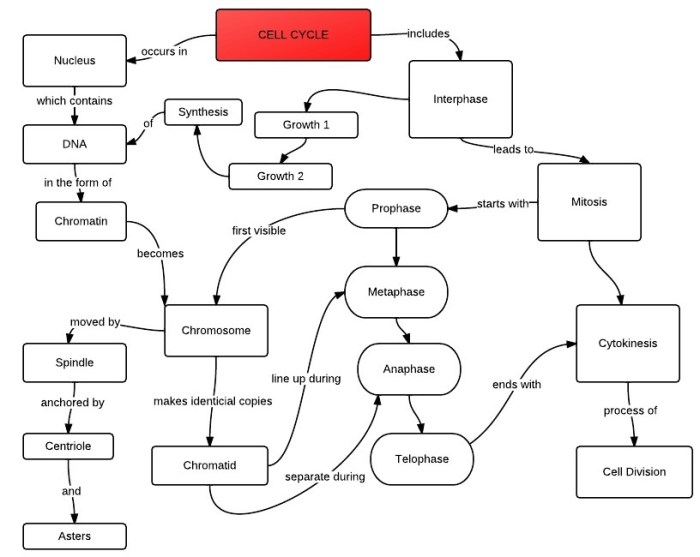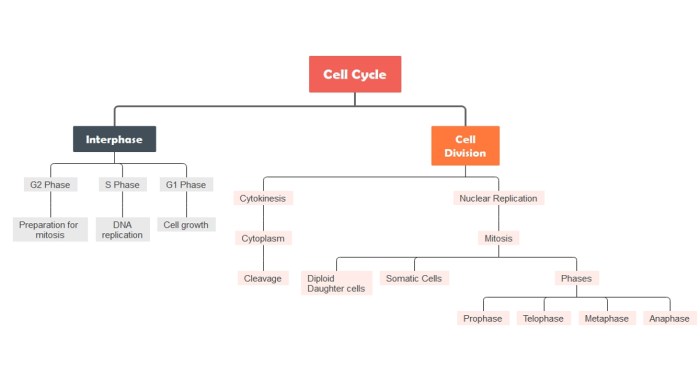Unlock the secrets of cell division with the power of concept mapping! This comprehensive guide, centered around the concept mapping cell division answer key, will empower you with a deep understanding of this fundamental biological process. Prepare to embark on an enlightening journey as we explore the benefits, techniques, and applications of concept mapping in the realm of cell division.
Concept mapping is a revolutionary tool that transforms complex scientific concepts into visually captivating and easily digestible representations. Its ability to organize, connect, and present information makes it an invaluable asset for comprehending the intricacies of cell division. With this guide as your compass, you’ll master the art of creating effective concept maps, unraveling the mysteries of cell division, and unlocking the potential of concept mapping in cell biology.
Concept Mapping in Cell Division: Concept Mapping Cell Division Answer Key

Concept mapping is a graphical representation of the relationships between concepts and ideas. It can be used as a tool for understanding complex processes, such as cell division.Concept maps can be used to represent the different stages of cell division, the key concepts involved, and the relationships between these concepts.
They can be a valuable tool for students and researchers alike, as they provide a visual representation of the material that can help to improve understanding and retention.
Methods for Creating Concept Maps
There are a variety of methods for creating concept maps. Some people prefer to use manual techniques, such as drawing the map on paper or using sticky notes. Others prefer to use digital techniques, such as using a computer program or online tool.No
matter which method you choose, there are some general steps that you can follow to create a concept map:
- Start by identifying the main concept that you want to map.
- Brainstorm a list of related concepts and ideas.
- Organize the concepts into a hierarchical structure.
- Draw lines to connect the concepts and label the lines with the relationships between the concepts.
Using Concept Maps to Analyze Cell Division, Concept mapping cell division answer key
Concept maps can be used to analyze the different stages of cell division. By mapping the key concepts and relationships involved, you can gain a better understanding of the process.For example, you could create a concept map to represent the stages of mitosis.
The map would include concepts such as prophase, metaphase, anaphase, and telophase. The lines connecting the concepts would be labeled with the relationships between the stages, such as “leads to” or “followed by.”By analyzing the concept map, you can see how the different stages of mitosis are related to each other and how they contribute to the overall process of cell division.
Applications of Concept Maps in Cell Biology
Concept maps have a wide range of applications in cell biology. They can be used to represent not only cell division, but also other key concepts such as cell structure, function, and regulation.Concept maps can be a valuable tool for students and researchers alike, as they provide a visual representation of the material that can help to improve understanding and retention.
They can also be used to communicate complex ideas to a wider audience.
Top FAQs
What are the advantages of using concept maps in understanding cell division?
Concept maps provide a visual representation of the key concepts and their relationships, making it easier to grasp the overall process of cell division.
How can concept maps be used to analyze the different stages of cell division?
By connecting the key events and processes of each stage, concept maps allow for a comprehensive analysis of the sequential nature of cell division.
What are some tips for creating effective concept maps for cell division?
Start with a clear understanding of the concepts, use colors and symbols for visual impact, and ensure the map is well-organized and easy to navigate.


